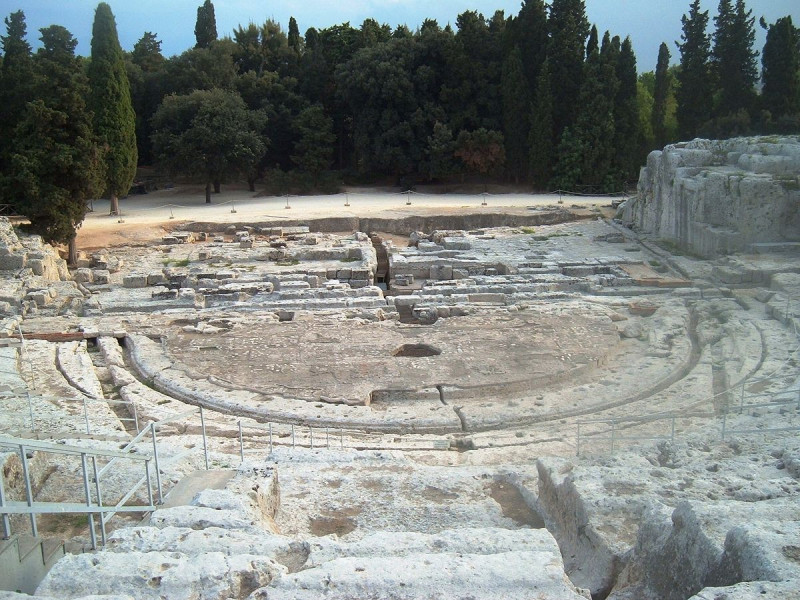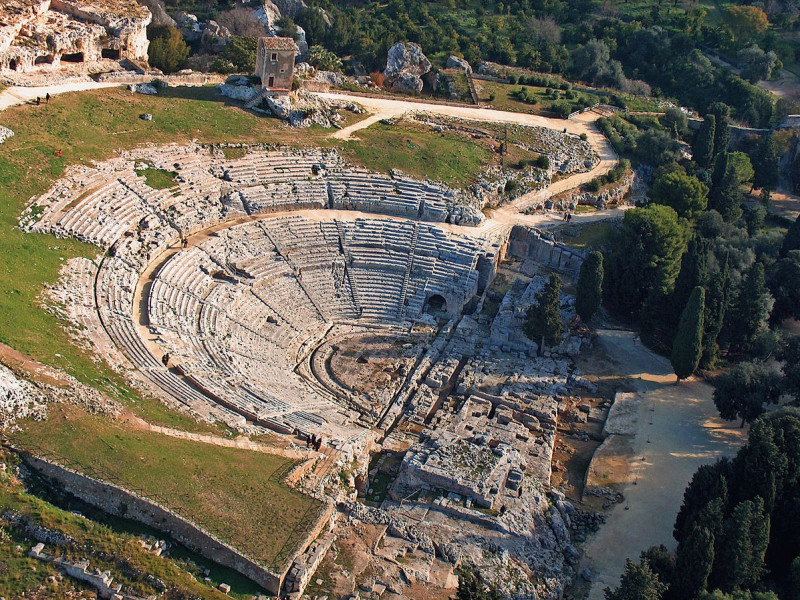Teatro Greco di Siracusa
Greek Theater of Syracuse is a theater built in its first phase in the fifth century BC, located inside Archaeological Park of Neapolis, on the slopes of Temenite hill, remade in the III century BC. and still re-transformed in Roman times. Its construction was designed taking into account both natural form of Temenite hill, and the possibility of making the most of the acoustics and panoramic view of the arch of the port and Ortigia island. The cavea had one of the largest diameter in Greek world and was originally made up of 67 orders of steps, mostly excavated in the rock and divided into 9 sectors. Scenic building has completely disappeared, only the cuts made in the rock are visible. To the decoration of the scene probably belonged the statue of a caryatid, currently preserved in Archaeological Museum. Important changes were made in the early Augustan age: the cavea was modified in a semicircular form, typical of Roman theaters, rather than horseshoe-shaped, as used for Greek theaters, and the corridors that allowed access to the building were made scenic. In 2014 Regional Department for Cultural Heritage authorized the use of Greek Theater for summer performances of music, opera and dance.


